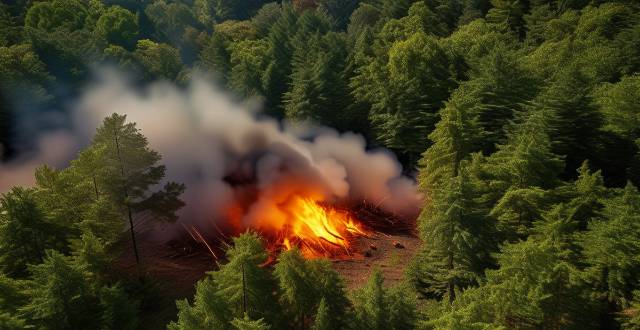Climate change affects forest ecosystems in numerous ways, including changes in temperature and precipitation, shifts in tree species distribution, alterations in fire regimes, increased pest and disease outbreaks, and reduced carbon sequestration. These impacts can lead to heat stress for trees, altered seasonal events, changes in tree growth rates, increased wildfire risk, and even tree mortality during extreme droughts. Invasive species may also outcompete native trees, further altering the structure and function of forest ecosystems. Addressing these challenges will require a multifaceted approach that includes reducing greenhouse gas emissions, protecting and restoring forests, and adapting to changing conditions.

How Does Climate Change Affect Forest Ecosystems
Climate change has a profound impact on forest ecosystems, affecting everything from the distribution of tree species to the timing of seasonal events. Here are some ways in which climate change affects forest ecosystems:
1. Changes in Temperature and Precipitation
- Increased Temperatures: Rising temperatures can lead to heat stress for trees, making them more susceptible to pests and diseases. It can also cause changes in the timing of seasonal events, such as earlier springs and later frosts, which can affect the growth and reproduction of trees.
- Changes in Precipitation: Changes in precipitation patterns, such as increased rainfall or droughts, can affect the availability of water for trees. This can lead to changes in tree growth rates, increased wildfire risk, and even tree mortality during extreme droughts.
2. Changes in Tree Species Distribution
- Shifting Ranges: As temperatures rise, some tree species may move to higher elevations or latitudes where conditions are more suitable for their growth. This can lead to changes in the composition of forest ecosystems, with some species becoming more common and others becoming less common or even disappearing altogether.
- Invasive Species: Climate change can also facilitate the spread of invasive species that outcompete native trees for resources, further altering the structure and function of forest ecosystems.
3. Changes in Fire Regimes
- Increased Fire Frequency and Intensity: Warmer temperatures and drier conditions can increase the frequency and intensity of wildfires, which can have devastating effects on forest ecosystems. Fires can kill trees, reduce biodiversity, and release large amounts of carbon into the atmosphere.
- Changes in Post-Fire Recovery: Changes in climate can also affect how quickly forests recover after fires. For example, if rainfall is reduced or becomes less predictable, it can take longer for trees to regenerate after a fire.
4. Changes in Pest and Disease Dynamics
- Pest and Disease Outbreaks: Warmer temperatures can increase the range and abundance of pests and diseases that affect trees. This can lead to widespread damage or death of trees, further altering the structure and function of forest ecosystems.
- Changes in Host-Pathogen Interactions: Changes in climate can also affect the interactions between trees and the pathogens that cause disease. For example, warmer temperatures can increase the virulence of some pathogens, making them more harmful to trees.
5. Changes in Carbon Sequestration
- Reduced Carbon Uptake: As forests are affected by changes in temperature, precipitation, fire regimes, and pest and disease dynamics, they may become less effective at sequestering carbon from the atmosphere. This can exacerbate the effects of climate change by increasing the amount of carbon dioxide in the atmosphere.
- Carbon Release During Disturbances: Disturbances such as fires and storms can release large amounts of carbon stored in trees back into the atmosphere, further contributing to climate change.
In conclusion, climate change has far-reaching impacts on forest ecosystems that affect everything from individual trees to entire ecosystems. Addressing these challenges will require a multifaceted approach that includes reducing greenhouse gas emissions, protecting and restoring forests, and adapting to changing conditions.